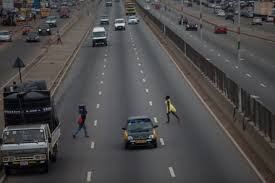Road safety is an urgent and significant challenge in the Northern Region of Ghana. The region has been grappling with alarmingly high accident rates, which have raised concerns among local authorities and communities. These accidents result not only in injuries but also in tragic losses of life.
The roads in this region are vital for transportation, enabling trade, travel, and communication. However, many factors contribute to the rising number of accidents. First and foremost, the road infrastructure is often inadequate. Poorly maintained roads lead to dangerous driving conditions, leaving many drivers at risk. Potholes, unmarked lanes, and lack of proper signage are common issues that exacerbate the dangers on the roads. Additionally, the absence of street lighting makes night driving particularly hazardous, increasing the likelihood of accidents.
In this article, we will explore the pressing issue of road safety in Northern Ghana. We will dive into various factors contributing to the current challenges faced on the roads.

Challenges Contributing to Road Accidents
Several factors contribute to the high accident rates in Northern Ghana, and addressing these factors is paramount.
- Poor Infrastructure
Poor infrastructure stands out as a major concern. Many roads in the region are in disrepair, riddled with potholes and unpaved surfaces. These hazardous conditions create dangerous driving environments, where drivers often struggle to maintain control over their vehicles. Consequently, the likelihood of accidents increases significantly. Furthermore, the state of the roads discourages safe driving practices and can lead to reckless behaviour among drivers who may feel compelled to navigate poorly maintained paths quickly.
- Vehicle Conditions and Maintenance
Another critical factor in road safety is the condition of vehicles on the roads. Many vehicles in the region are often in poor condition due to a lack of regular maintenance. Neglecting routine checks can lead to mechanical failures that pose dangers to both drivers and pedestrians. As a result, mechanical failures frequently occur during transit, leading to potentially catastrophic accidents. It is essential to recognize the importance of vehicle safety in the broader context of road safety.
When vehicles are not adequately maintained, the risk of accidents escalates. Moreover, it is not uncommon for drivers to operate vehicles that are unfit for the road, further exacerbating the safety crisis. For instance, worn-out brakes or bald tyres can severely affect a vehicle’s performance, increasing the chances of accidents.
To address this issue, it is crucial to educate vehicle owners about the importance of regular checks and maintenance. Awareness programs can highlight the significance of ensuring that vehicles are roadworthy. Encouraging local mechanics to provide affordable maintenance options can also help improve vehicle safety.

- Driver Behavior and Education
Furthermore, driver behaviour significantly influences the rate of accidents in the region. Many drivers lack formal training, which can lead to misunderstandings of traffic rules. This lack of knowledge often results in reckless driving behaviours. Reckless driving is a pervasive issue, with many drivers exhibiting a blatant disregard for traffic laws. Speeding, aggressive manoeuvres, and failure to yield are common behaviours that contribute to the high accident rates.
Additionally, the lack of proper driver training programs exacerbates the situation. Many drivers may not fully understand the rules of the road or the consequences of their actions. This ignorance can lead to dangerous situations that put everyone at risk.
To combat these issues, it’s important to promote driver education. Training programs can equip drivers with the necessary skills and knowledge to navigate the roads safely. Moreover, public awareness campaigns can emphasize the importance of adhering to traffic laws. By fostering a culture of responsible driving, we can work towards a safer driving environment for all.
READ ALSO: Impact of Poor Infrastructure on Accident Rates in Northern Ghana







